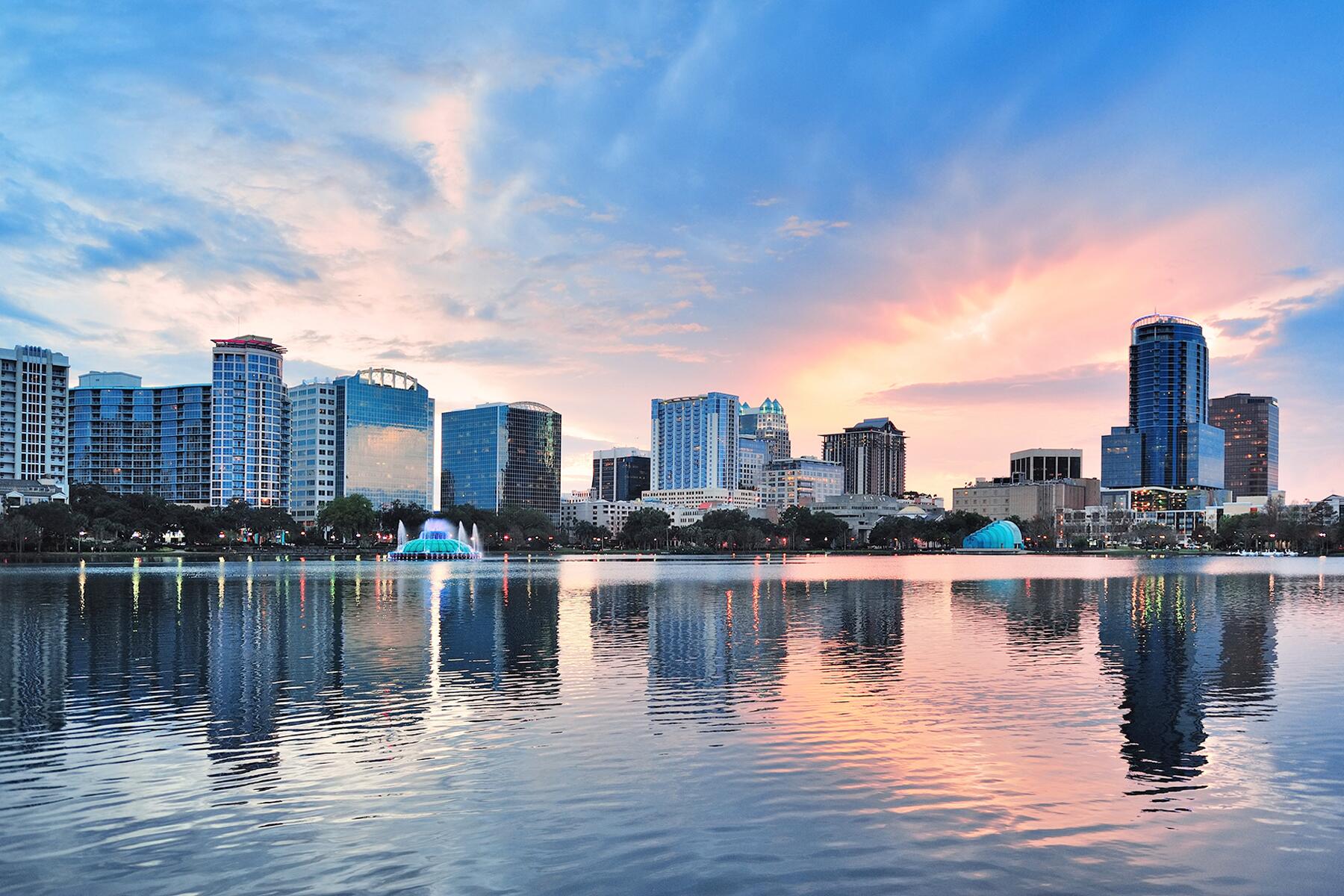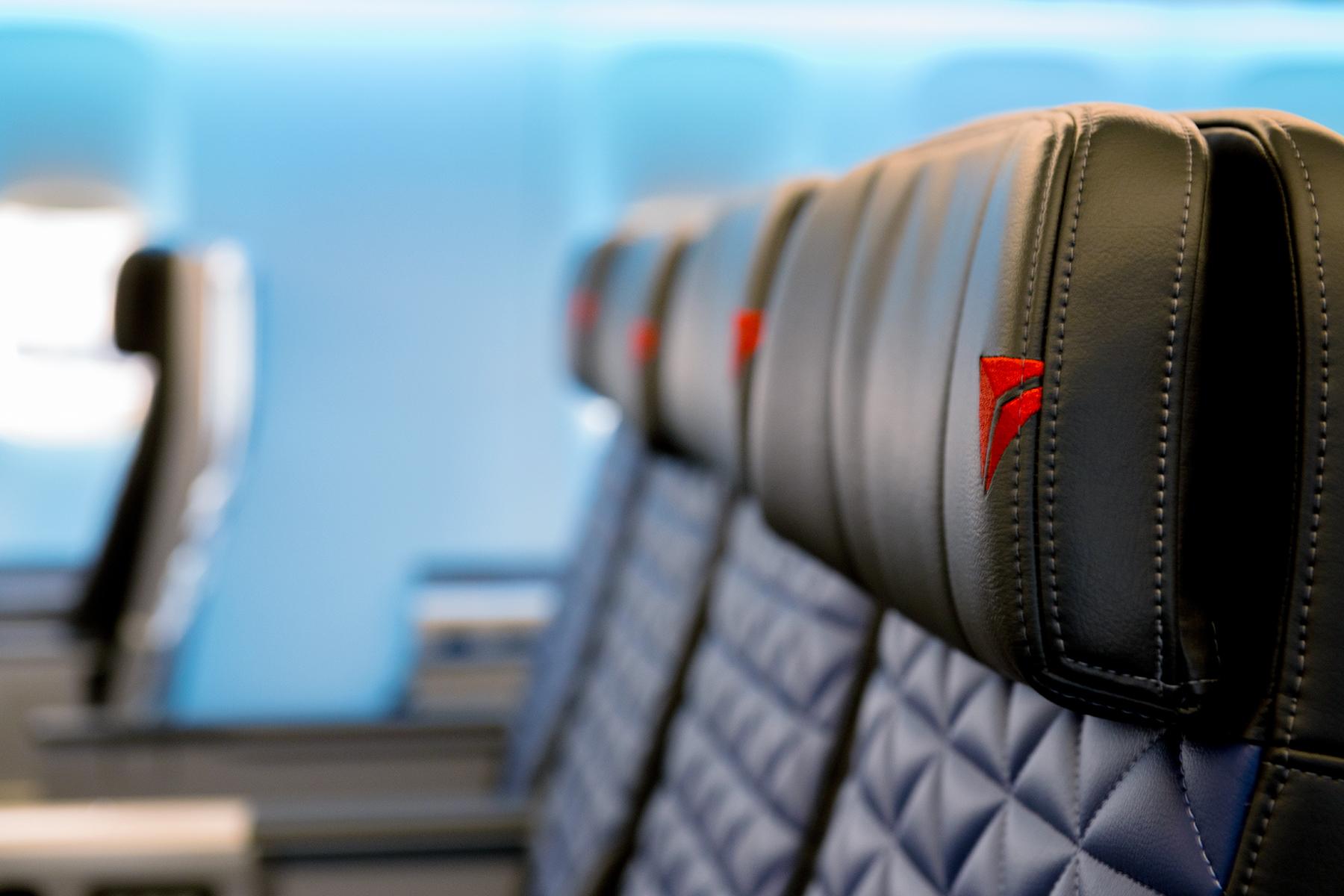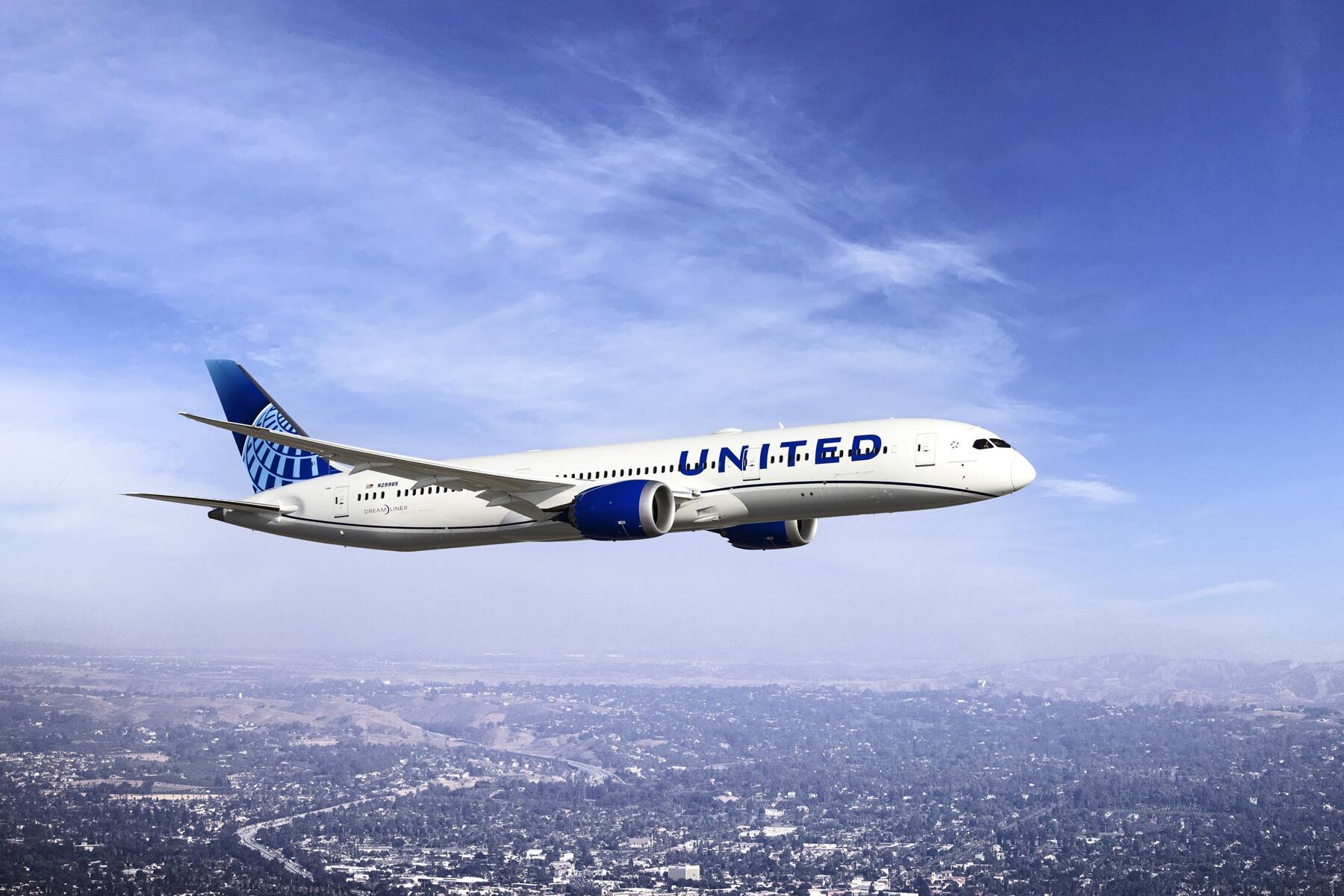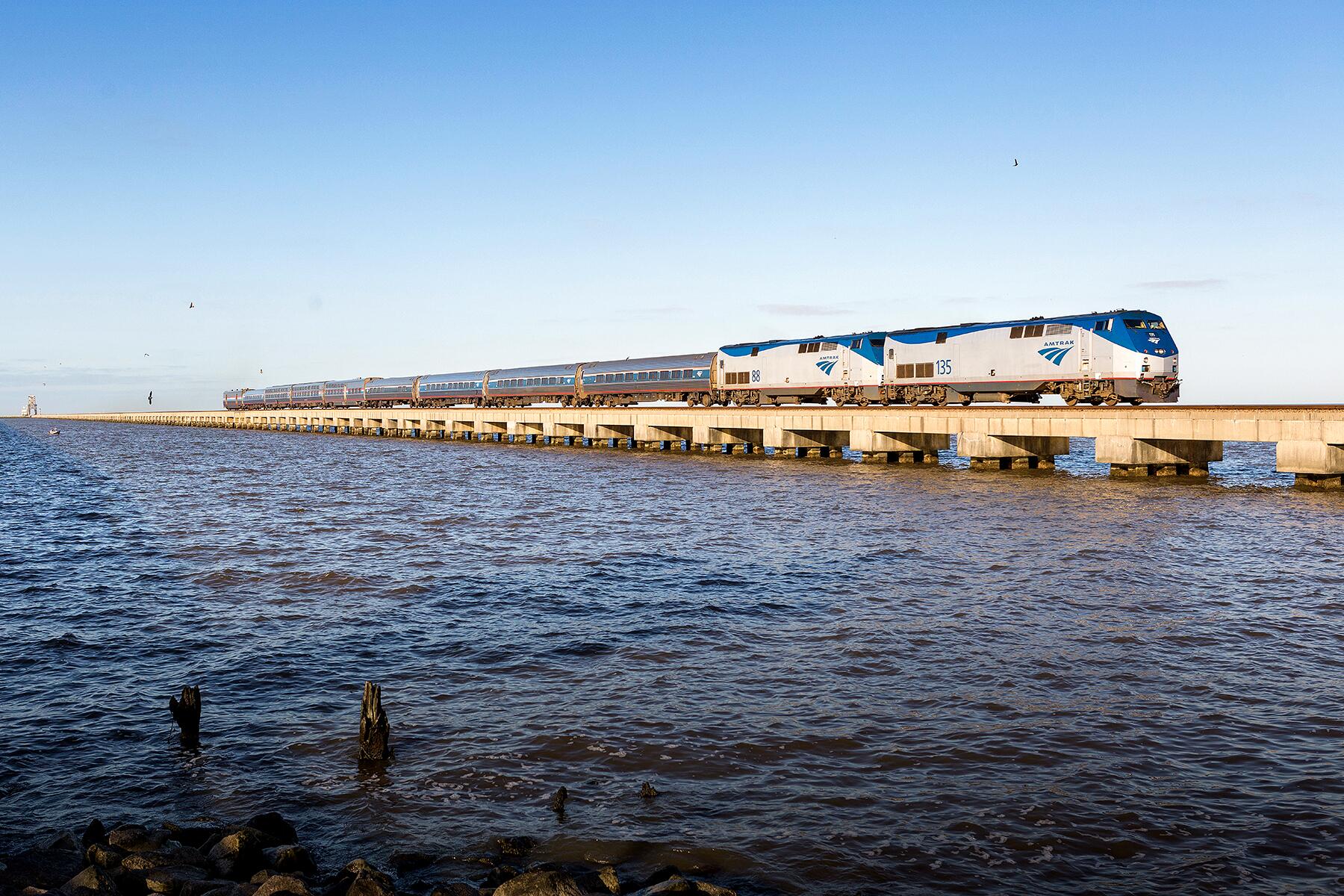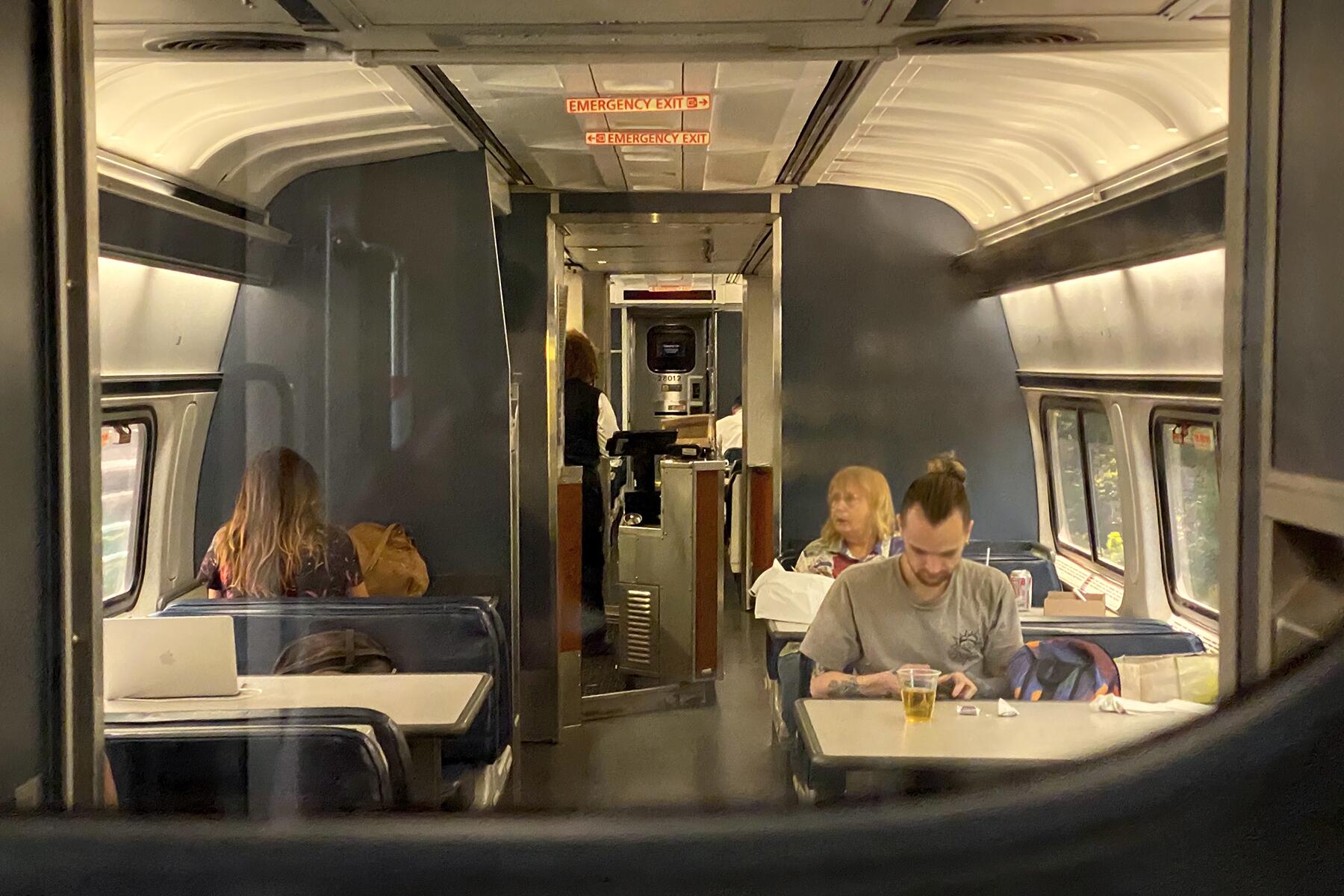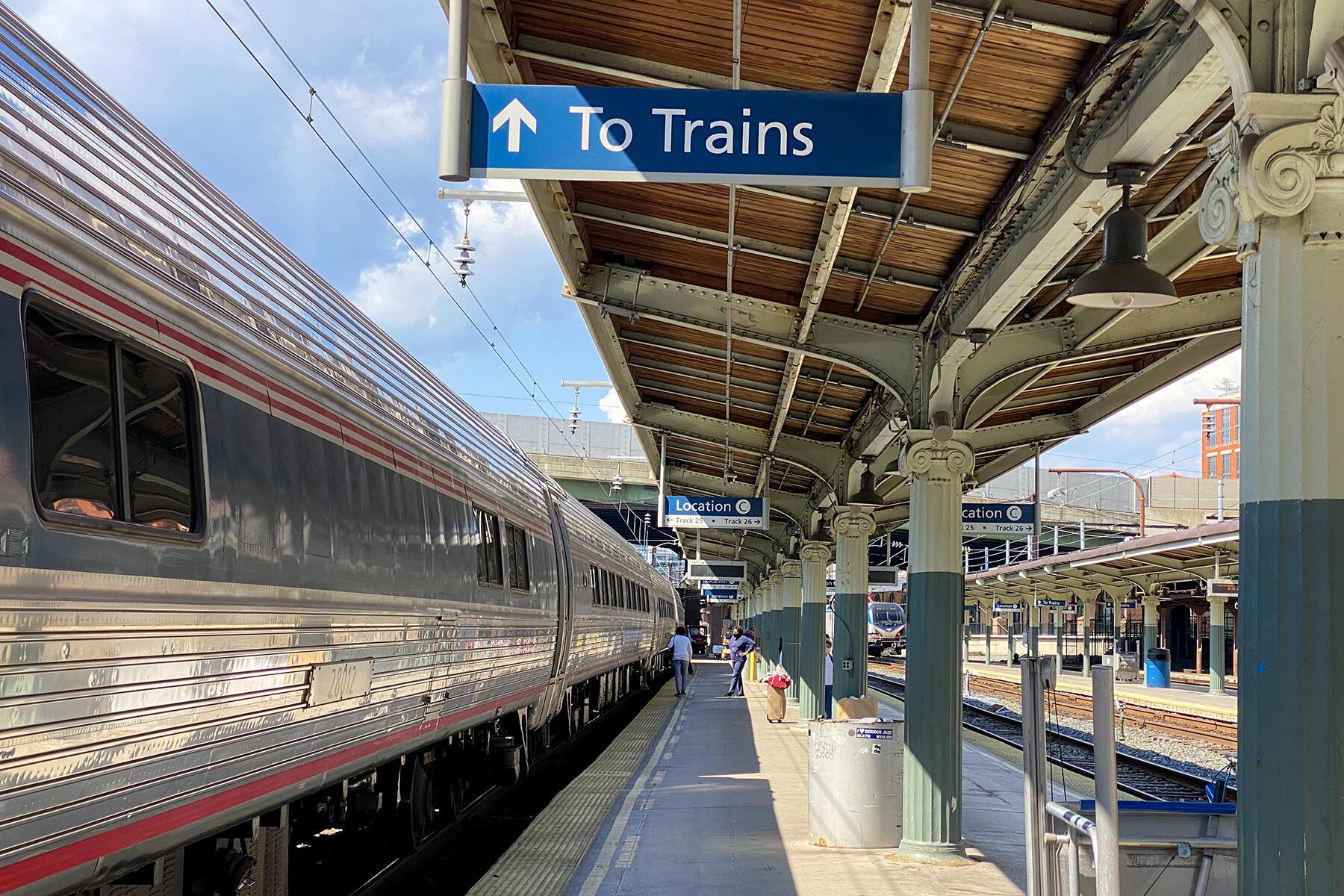The Crescent, whose route dates back to the 19th century, takes you 30 hours and 1,377 miles between New Orleans and New York City.
A
s The Crescent, a hulking 9-carriage Cadillac of a train gently pulls out from the Union Passenger Terminal in New Orleans, a wave of calm suddenly sweeps through the corridors as though it’s being pumped out of air conditioning units.
Behind it are the liquor-powered festivities of Bourbon Street, the early-hours jazz sets in shoebox-sized bars, and the finger-licking Creole cuisine that brings The Big Easy to life— as the dial of life turns to a relaxing “glide” mode.
“Welcome aboard,” says Kevin, the sleeping car’s attendant, pointing out and explaining the array of amenities available, from the foldout chess board to the drink menu. “Just tell me if you need anything, and I’ll come running.”
The epic 1,377-mile, 30-hour link between New Orleans and Penn Station in New York City is one of the longest train journeys in the country, passing through more states than any other Amtrak route: 12 states as well as the District of Columbia.
While some of its many passengers use the route for commuting, The Crescent is perhaps the embodiment of traveling for the experience of the journey rather than the need to arrive at the destination. It’s like a road trip without traffic or the need to drive; a long-haul flight without the high emissions and painful airport experience–yet with memorable views and an altogether slower, restorative pace.
Top Picks for You
Recommended Fodor’s Video
Not long after departing New Orleans, the train traverses the milky waters of Lake Pontchartrain via the longest rail bridge in the United States. From the sweltering bayou country of Louisiana, it passes through the cotton fields and Civil War sites of Alabama, the foothills of the Blue Ridge Mountains in Georgia, and continues all along the Eastern Seaboard, including the Shenandoah National Park in Virginia.
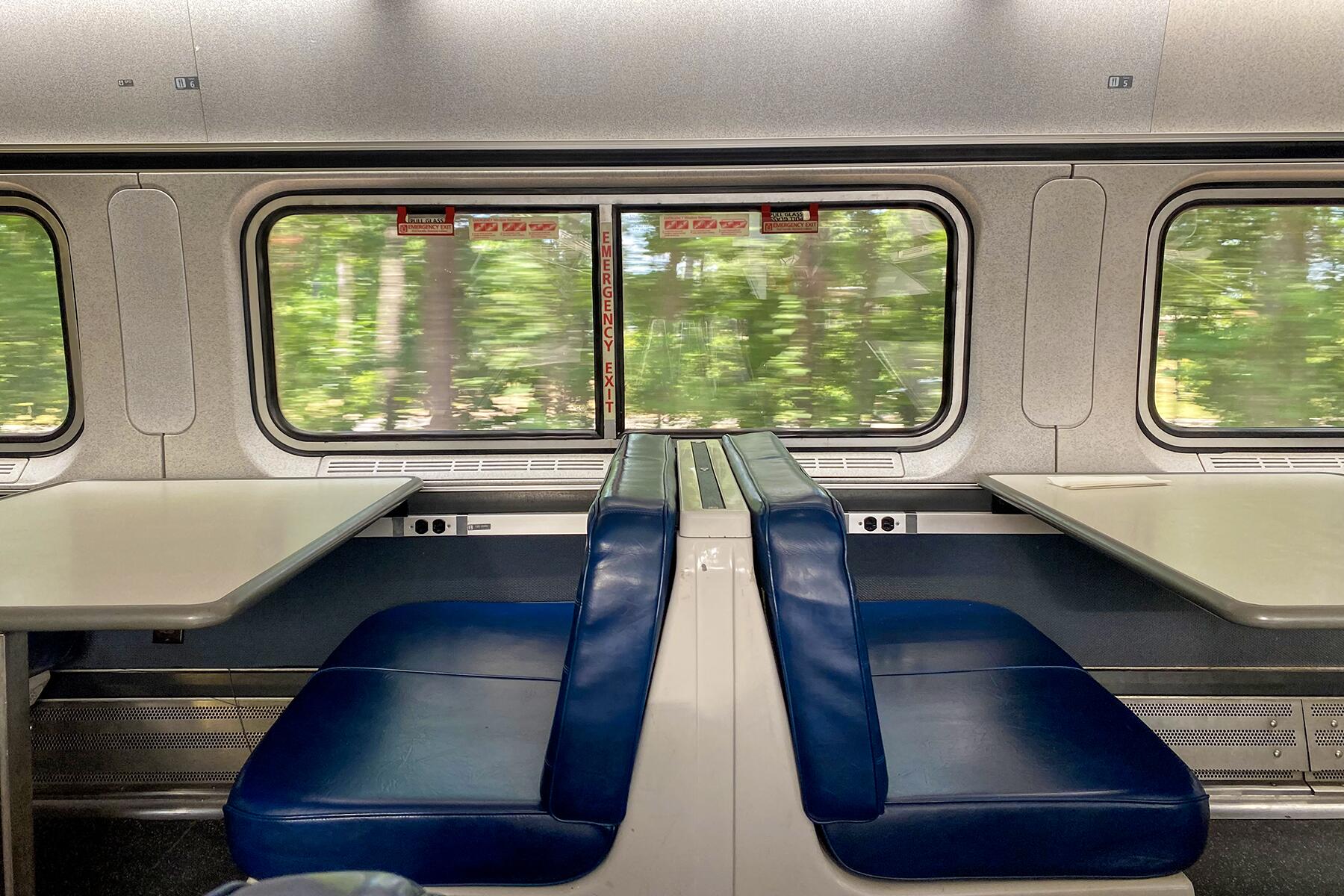
The Crescent is perhaps the embodiment of traveling for the experience of the journey rather than the need to arrive at the destination.
“Things look very different from the train,” says Marc Magliari, a spokesperson for Amtrak, which operates The Crescent. “You let us do the work for you. You get more of a feel of the country, skirting mountain ranges, the rolling hills of the south, and the Mississippi Delta, where it’s as if the train is floating above the water.”
Among its 31 stops, which vary in time, are Birmingham, Atlanta, Greenville, South Carolina, Charlotte, North Carolina, Washington D.C., Baltimore, and Philadelphia. Rail riders can stroll as they please along the window-filled corridors and gaze out, or during the longer stops, can even get off and stretch their legs for a few minutes, giving a curious sense of liberty to proceedings, which can, of course, be experienced going in the other direction.
Levels of comfort, too, are on another level. In coach, cheap and snug reclining seats are available to see the journey. But for the day-and-a-half ride, there are also 3.5 feet by 6.5 feet roomettes fitted with a foldout table, toilet, sink, and reclinable chairs that transform into a bed as well as a second that can be lowered from the ceiling at night. Roomier bedrooms, meanwhile, are the luxury option, and each includes a shower in a separate water closet.
But beyond the scenery and mind space, for many, the jewel of the journey will be the restaurant car, a place to meet other travelers while sipping a coffee or chomping on a buttery pound cake. One tattooed man from Georgia offers me a cup of his vodka; we talk about peach cobbler and alligators. An elderly couple of train enthusiasts from Florida shows me photographs of their rail travels in Russia and China. “It’s our favorite way to travel,” they tell me. “You can soak all the surroundings in.”
Since the dawn of the automobile, the road trip—boosted by cultural touchstones such as Jack Kerouac’s On The Road and Dennis Hopper’s Easy Rider—has come to be the defining form of adventurous transport in the US. Hollywood-style aviation glamor, too, has seen planes dominate long-distance domestic travel, mostly leaving little room for train travel.
Historically and culturally, it’s been other countries that have embraced rail: Japan is famed for its fleet of high-speed shinkansen bullet trains, France’s TGV network covers the whole country and is closely connected with the rest of Europe, India has over 40,000 miles of railroads, and in Russia is home to the longest rail line in the world, with the 5,772-mile Trans-Siberian stretching from Moscow to Vladivostok.
Yet, in the U.S., things could all be about to change track. With the pandemic, there’s now a greater desire for a different kind of “slow” travel (which is apt, because delays are to be expected on the route). But more pressingly, with the worsening climate crisis, low-carbon travel through the likes of trains is growing increasingly important—and cheaper, especially in a time of spiraling fuel costs—as overlooked routes such as The Crescent gain greater recognition.
At the same time, the nation’s train network is set to grow like never before. Last year, President Joe Biden announced $66 billion in new funding for rail, which could fuel Amtrak’s expansion in its routes across the country and bolster the current routes in place. The Crescent is ranked 10th in ridership out of Amtrak’s 15 long-distance routes, welcoming 295,000 riders in the 2019 fiscal year.
“We have a strong culture of train riding in pockets of the country,” says Magliari. “In California, we can’t add them fast enough. The more service we have, the more of a train riding culture we can inculcate.”
But the rise of U.S. rail travel is actually more of a revival. The Crescent dates back to the 19th century with a predecessor operated by Southern Railway that began running between Washington, D.C., and New Orleans in 1891. By 1950, the train was upgraded with lightweight, streamlined cars, sleeper-observation carriages with elevated seats facing out so passengers could watch the scenery, and master bedrooms large enough to sleep three. It was in 1979 that Amtrak took over the route.
When The Crescent finally rolls through New Jersey and into Manhattan, whose gilded skyline glimmers in the early evening, there’s one final moment of tranquility and a sense of timelessness before entering the chaos of downtown.
“Sorry, you can’t stay,” grins the attendant, Kevin. “Back to reality.”
